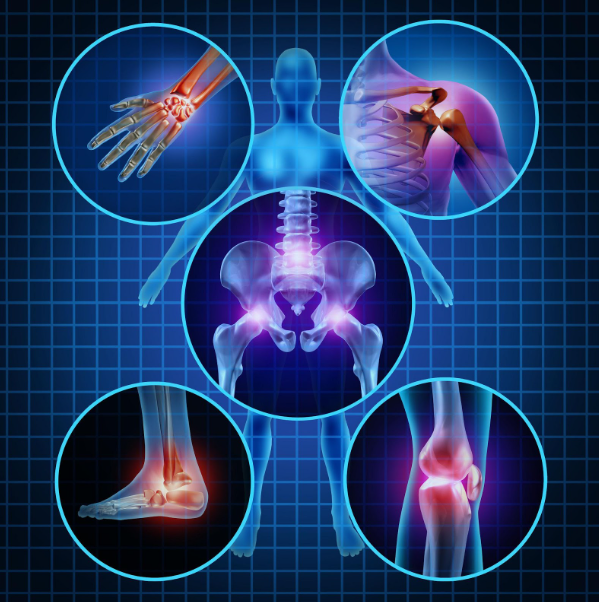Orthopedics: An In-Depth Study of the Human Musculoskeletal System
Orthopedics: An In-Depth Study of the Human Musculoskeletal System

The human body comprises a system of bones, joints, ligaments, tendons, muscles, and nerves working together to move, work, and be active. The study of this musculoskeletal system is called orthopedics, and a person who specializes in orthopedics is known as an orthopedist. The field of orthopedics explores several strategies to ensure that this system operates effectively.
If you are on the lookout for a comprehensive guide to help you explore the details of this domain, we've got you covered. Read on for a thorough study of orthopedics, outlining the origin of this field, the various problems that orthopedists treat, what happens during an orthopedic appointment, and more.
The Origin of the Name
The older term orthopedia, featured in the title of a book written in 1741 by Nicholas Andry, a professor of medicine at the University of Paris, is where the contemporary name orthopedics originated from. Orthopedia is a combination of the Greek words "orthos," which means "straight and without deformity," and "paidios," which means "child." The term orthopedics literally therefore only emphasizes the role that anomalies and developmental trauma played in the growth of this profession.
Orthopedics was first centered on treating young children with limb and spine abnormalities. However, because of developments in medicine and surgery, orthopedists now treat patients of all ages, including elderly people with arthritis and young athletes who require arthroscopic surgery.
Orthopedic Issues
Orthopedics covers a wide range of medical issues that affect the bones, joints, ligaments, tendons, and muscles, such as the following:
Bones
Medical issues related to bones can include treating the following:
- Bone deformities: A change or distortion from the bone's normal size or shape.
- Bone infections: When bacteria or fungus infiltrate a bone, an infection known as osteomyelitis can occur.
- Bone tumors: Tumors develop when cells within a bone divide uncontrolled, generating a lump or mass of aberrant tissue.
- Fractures: A rupture in a bone's continuity.
- Amputation: The removal or loss of a body part, such as a finger, toe, hand, foot, arm, or leg.
- Non-unions: A condition in which a broken bone fails to heal.
- Malunions: A broken bone that heals in an odd position is known as a "malunion," which can impair the bone's or limb's functionality and give the bone or limb a bent appearance.
- Spinal deformities: Under this condition, the curvature of the spine deviates from the typical, graceful S-shape viewed from the side or the straight line down the back of a normal spine.
Joints
Medical issues related to joints include the following:
- Arthritis: A medical condition causing swelling and discomfort of one or more joints.
- Bursitis: Under this medical condition, patients experience inflammation in the tiny, fluid-filled sacs, known as bursae, that cushion the bones, tendons, and muscles close to the joints.
- Dislocation: A dislocation is an injury where the ends of your bones are jerked out of place.
- Joint pain: Many different traumas or illnesses might result in joint pain. It could be related to muscle soreness, bursitis, and arthritic joint pain.
- Joint swelling or inflammation: Swelling in the joints can cause pain and stiffness. Swelling of the joint after an accident could also indicate a shattered bone, a torn muscular tendon, or a torn ligament.
- Ligaments and tendon tears: Tears or ruptures of ligaments and tendons are injuries to the soft tissues bridging muscles and joints. The common symptoms of tendon and ligament injuries include pain and swelling.
Role of an Orthopedist
Orthopedists are active in all facets of musculoskeletal health care, using medical, physical, and rehabilitation techniques in addition to surgery. It is a specialization with astonishing depth and diversity. Orthopedists provide care for a wide range of illnesses and injuries, such as fractures and dislocations, torn ligaments, sprains and strains, tendon injuries, and more.
Their roles and responsibilities include:
- Diagnosing a musculoskeletal injury or disorder
- Providing medical treatment in the form of medications, physical exercises, and surgeries
- Offering physical therapy or exercise recommendations for rehabilitation to regain mobility, strength, and function
- Preventing harm or delaying the progression of diseases through education and treatment strategies
Types of Orthopedic Treatments
Depending upon the medical conditions, orthopedic specialists suggest several therapies and surgical interventions which can be categorized as either non-surgical or surgical.
Non-Surgical Treatments
Conservative therapies are another name for these kinds of procedures. Orthopedic doctors frequently prioritize nonsurgical therapies before advising surgery. Here are some non-surgical treatment options:
- Exercises: Exercises assist in maintaining or enhancing strength, flexibility, and range of motion in a particular location; an orthopedic specialist may suggest physical activities or stretches.
- Immobilization: Avoiding further stress on a region occasionally speeds up healing. Casts, braces, and splints are a few examples of immobilization methods used to avoid such external strain.
- Medication: An orthopedic doctor may suggest specific medication to help with symptoms like pain and swelling relief.
- Lifestyle changes: To avoid aggravating an injury or ailment, an orthopedist may recommend lifestyle changes, such as altering your physical activity, food intake, and exercise routine.
Surgical Treatments
Even with conservative treatment, a condition or injury may not get better. In such cases, an orthopedist might advise surgery. Surgical procedures may include the following:
- Joint replacement: In joint replacement surgery, the orthopedist replaces the damaged or diseased components of a joint.
- Internal fixation: To hold damaged bones in place while they heal, internal fixation includes inserting hardware such as pins, screws, plates, and rods.
- Fusion: This entails joining two bones together using internal fixation and the bone graft material.
- Osteotomy: The procedure of cutting and repositioning a bone fragment during surgery.
- Release surgery: A surgery specifically designed to treat carpal tunnel syndrome. An orthopedist performs this procedure to treat symptoms by releasing pressure on the median nerve.
What Happens During an Orthopedic Appointment?
The common procedures followed during an orthopedic appointment can include diagnosis, in-office procedures, and treatment.
Diagnosis
The diagnosing process starts with assessing the symptoms, reviewing the patient’s medical history, and usually involves a physical examination. Finally, if x-rays are asked for before the appointment, they will also be studied during the diagnosing process for further assessment.
In-Office Procedures
To diagnose and treat specific musculoskeletal problems, an orthopedist may carry out some medical procedures in the clinic. The most popular and accessible diagnostic imaging method utilized in-office treatments is x-ray technology, for example. An orthopedist will frequently take x-rays in-office so they may diagnose specific issues while a patient is there for their appointment. They could also perform ultrasound scans and administer injections to reduce inflammation.
Treatment
To treat chronic musculoskeletal disorders, an orthopedist may recommend medication, physical therapy, home exercises, injections, acupuncture, mobility aids, or even surgery for relief. No matter what, an appointment will never end without a plan to find relief—or a plan to learn more to find said relief—in place.
Final Thoughts
Orthopedic studies include cutting-edge investigation, diagnosis, and care of musculoskeletal illnesses and disorders. This branch of medicine assists in treating injuries to the bones, joints, muscles, ligaments, and tendons to ensure that the human body can move properly. The field has expanded to treat musculoskeletal problems in patients of various ages after being initially created to treat muscular defects in children. Orthopedic doctors treat issues based on the patient's condition using surgical and non-surgical methods.
The orthopedist evaluates the symptoms during an appointment, suggests any necessary diagnostic testing, and then makes appropriate treatment recommendations. Therefore, it is wise to uphold a healthy lifestyle and get the necessary orthopedic consultation to ensure a healthy life.
When seeking
orthopedic care, make sure you get in touch with the experts at
Bayou Bend Health Systems. To protect your health and welfare, we offer top-notch treatments and employ skilled orthopedists.
Get in touch with us to make an appointment today!



